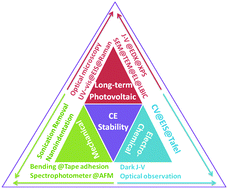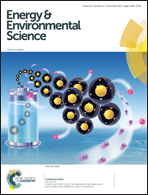Stability assessment of alternative platinum free counter electrodes for dye-sensitized solar cells
Abstract
Platinum (Pt)-free counter electrodes (CEs) are economical alternative components of dye-sensitized solar cells (DSSCs) that have attracted much interest and become the focus of research, with an increasingly large number of scientific papers published in the last two decades. The development of these CE materials was driven mainly by desires to overcome the disadvantages of Pt, as follows: high cost, scarcity, corrosion by the I3−/I− redox couple electrolyte, and mismatch or non-effectivity in the I-free redox couple electrolyte. Although much more is now known about the principal physicochemical processes that occur during CE operation of the DSSC, the stability issues associated with CEs have not been matched by the exponential increase in CE research effort. This raises questions regarding the stability of the CEs whether the present research is sufficiently addressing the stability issues that limit DSSC performance. This review attempts to identify some of the key techniques that evaluate CE stability in DSSCs through a selective presentation of recent research highlights. Classical approaches could effectively assess the probability of using alternative Pt-free CE materials for commercial application, which offer strategies to overcome the current stability stalemate.


 Please wait while we load your content...
Please wait while we load your content...